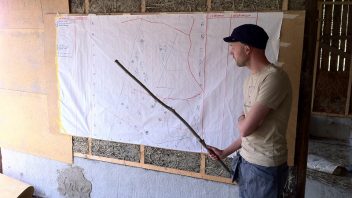
The community finance canvas helps you produce a financial plan to bring your design for a resilient community into being. This approach has been developed by a group within Transition Sweden, through a process of trial and error. Thanks to Steve Hinton for sharing this with us, and writing this guest blog post.
The purpose of the canvas is to help you bring your design for a resilient community closer to a stage where you can start to produce a financial plan.
We have tested it for eco-villages and CSA initiatives, so it is more oriented to food on the table and a roof over the head, but we believe it could be used for communities that might have less infrastructure too, like just a village hall, or a set of allotments.
A group within Transition Sweden connected to JAK bank (interest free banking) produced it through a series of trial and error. We are not finished but we offer this version for you to try. If you would like more information and tips before you start, please visit the website A Very Beautiful Place to download instructions and information sheets.
To begin, we suggest you print the canvas out, or copy it onto large paper and hang it on the wall or spread it out over a large table. Then you can use the canvas to visualize how the community might function when it is fully developed. This stimulates creativity, seeing multiple uses for buildings and other objects and ways to create a sustainable life together – from a financial, social and ecological point of view.
Here’s the canvas (click on it to make it readable, or download it via link at the end):
Working with the canvas
This tool resembles a painter’s canvas—preformatted with the eleven building blocks. We suggest you go through the blocks in order. You can either go through them rapidly, brainstorming to complete them as fast as possible, or go through them more thoroughly, returning to modify earlier blocks as your thinking develops. There are no right or wrong ways, just get going. The most important thing is the dialogue you have as you go.
You can choose to have a facilitator to guide you through or you could approach the task as you would a board game, helping each other through the different steps.
1) LAND ACCESS OR MAIN STRUCTURES
Community living often requires access to land and/or buildings. Access to land and buildings comes by purchasing outright, leasing or renting. In the middle of the canvas put your drawing of how the land and building can be used, or sketch out a vision for how it will provide for your needs.
A map is useful in planning and should include important aspects like access points, where streams and rivers leaving the property, various biotopes and buildings that house various key functions. Be sure to cover WAS: water, access, structures.
2) COMMUNITY
A community can consist of several overlapping circles of people. It can be helpful to visualize these as people standing in a circle; they all have a context they share, probably shared values but most importantly a shared intention. Some may have money to invest, some can pay a monthly fee. Others can pay as they go or provide work, both volunteer and paid.
It is helpful to spend time formulating the intention rather than be content to identify just a shared interest. Consider the following:
We have the shared intention of making a garden (intention: creating a garden)
Why do you want to create a garden?Because we want to grow our own food (intention: growing own food)
Why do you want to grow your food? Because we want to create food security for us all (intention; creating food security)
Notice that by asking “why”, the intention clarifies. Another point is that the intention becomes more compelling for more people. For example, not all like or have the physical ability to grow food, but many more are interested in food security, so the final version of the intention widens the number of people who can be involved. By clarifying intention it makes it easier for people to decide if they want to be a part of the community or not. This is better than having to clear up misunderstandings later on.
Finally, by clarifying intention you often open up to more solutions. In the case above creating food security could include engaging a farmer.
The other thing to consider when identifying community is size and scale. The community should be small enough that everyone can talk to each other, and large enough to provide a variety of perspectives and experience and skills to be able to pool capabilities to address challenges.
Conventional business models see a left to right flow of goods from suppliers to customers to whom you provide one specific value-addition. Community finance sees the relationships more in the way animals in an eco-system interact – mutualism – with a variety of exchanges back and forth. Relationships are not seen in strict terms such as customers and suppliers, rather in terms of stakeholder partners.
Identify other stakeholders, too. Your community will be part of a larger one, like your town or municipality. The more stakeholders that are engaged, the more resilient your community will be.
3) KEY OBJECTS
In order to function as a whole the initiative will need component parts that work together to provide the services the community requires.
Identifying the most practical scale at which to talk about objects needs a bit of thought. If the level is too detailed you get too many objects (like nuts and bolts). If the level is too general you miss out on getting a grasp on what is needed to create the services (like “a farm”).
These objects will later be analyzed in their four components: the output services they perform, the inputs needed, the human activities required (volunteer and professional) and the infrastructure they contain.
At the initial stage, just brainstorm the objects you think your community will need to function. Include the obvious “showers and toilets” and the less obvious “community meeting room”.
We often return to the object list whilst we do the rest of the canvas.
4) KEY SERVICES
People want money to be able to buy things. But these things in provide them with the services they need. Why do you want to buy a house? For shelter and security? Why do you want a car? To get around. Why do you want to buy a television? To be able to watch favourite programs.
Why should it be so that that which is essential to you, you buy as a consumer?
One way to identify what services you need is to ask yourselves if you had unlimited money, how would you live? Make a list. The answers provide clues as to what you would like to have from your initiative. It is an interesting exercise to go back over the list and remove all of the items that require massive amounts of fossil oil. Most people are surprised by how possible it is to live a good life without fossil-based energy.
5) UNITISATION
In providing and offering services, work with services can be helped by unitising then. Units can be:
• In time
• In quantity
• In terms of access
Units can be arrived at by stating with the idea of services and breaking them down using the criteria of availability, quantity, frequency etc.
Here are some examples:
• Access to room with shared kitchen 27/7 during summer months.
• Box of vegetables once a week in season.
• Transport to nearest railway station every morning and evening.
6) KEY ACTIVITIES
Work, defined in physics, is actually an effort applied to change the state of an object. We use the same word to describe performing a paid job. This can get confusing when considering community finance.
The canvas method sees work as all activities that taken together provide the services the community requires. So being a volunteer on the entertainment committee has the same value as digging ditches and planting seeds.
Community finance sees work and activity optimization as essential to providing the services the community values whilst exerting responsible stewardship on the natural resources – both health of humans and eco-systems in general. It also values the job nature does. The permaculture approach gets nature to do as much of the work as possible.
Conventional business thinking puts a low value on physical labour and a high one on intellectual work. At the same time, physical labour, in suitable amounts and carried out properly, is good for you. In fact, being outdoors doing physical labour with others is pleasurable and healthy. The community approach looks to get a good mix for everyone.
To add to the pane “activities” brainstorm a list of things that need to happen to provide the services identified.
Just create a list of what needs to be done, later on you can work out what:
• Needs special intellectual skills
• Is best done by many at a time
• Is best done by small groups
• Gives good exercise
• Needs careful supervision as it involves danger, etc
Pause for reflection and review at intervals. Check that everything matches so far, that the objects match the services and that the activities match the objects, for example.
7) CHAINS
Chains describe the series of steps needed to provide a service to the community and external customers. Each chain has a financial flow component (flow of money) and physi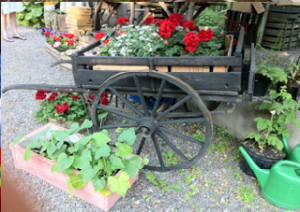 cal flow (flow of goods) and a flow of documents and communications (flow of information)
cal flow (flow of goods) and a flow of documents and communications (flow of information)
Look at the services you identified and draw out the chains of supply that will provide them.
Identify the start and finish of each, some examples:
• From field to community kitchen
• From field to community vegetable box scheme
• From enquiry to booked workshop space
8) REVENUE
Revenue in financial terms means money coming into an organisation through its regular activities.
In the case of financial permaculture approach these streams can come from members or non-members and come from those using the services provided.
At this stage, most consider a membership fee. We will do this later, but for now, break down the streams into a per object/per service/per unit basis.
Types of revenue streams
• Sales: objects and services sold generate a revenue stream.
• Usage fee: for example you pay per minute per telephone call using the telephone network.
• Rent: a fee for the use of an asset like a car or room.
• Subscription fee: this stream is generated by selling continuous access to a service
• Licensing fee; this stream comes from a contract for the rights to use intellectual property.
9) INPUTS
This section needs you to look through all of the services that will be provided, all of the activities, and to identify the inputs.
Check that inputs have been identified for the objects and services above. If you see alternative sources for the inputs, list the alternatives. At this stage, quantity is better than quality. A variety of input sources increases resilience.
10) MANAGEMENT
Questions here to consider are finding a suitable organizational form: cooperative, Ltd company etc, and finding ways to organize responsibilities. We like to think a mix of volunteer and paid work is good.
11) INVESTORS
The final section looks at where to get capital. Maybe you do not need to borrow from a bank, Transition groups have been extremely creative in finding ways to get started including local share issues and issuing bonds that correspond to pre-payment of products or services.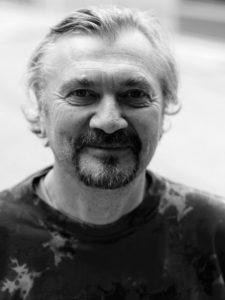
This first draft gets at the basics, but there is quite a way to go before you have all the figures ready. There is a lot more information on the canvas method on A very Beautiful Place. And if you try the canvas out, please get back to us with your feedback.
By Steve Hinton (right).
Links
Information about canvas workshops
Main image: The central canvas sketch of the area at Änggärdet Eco-village.

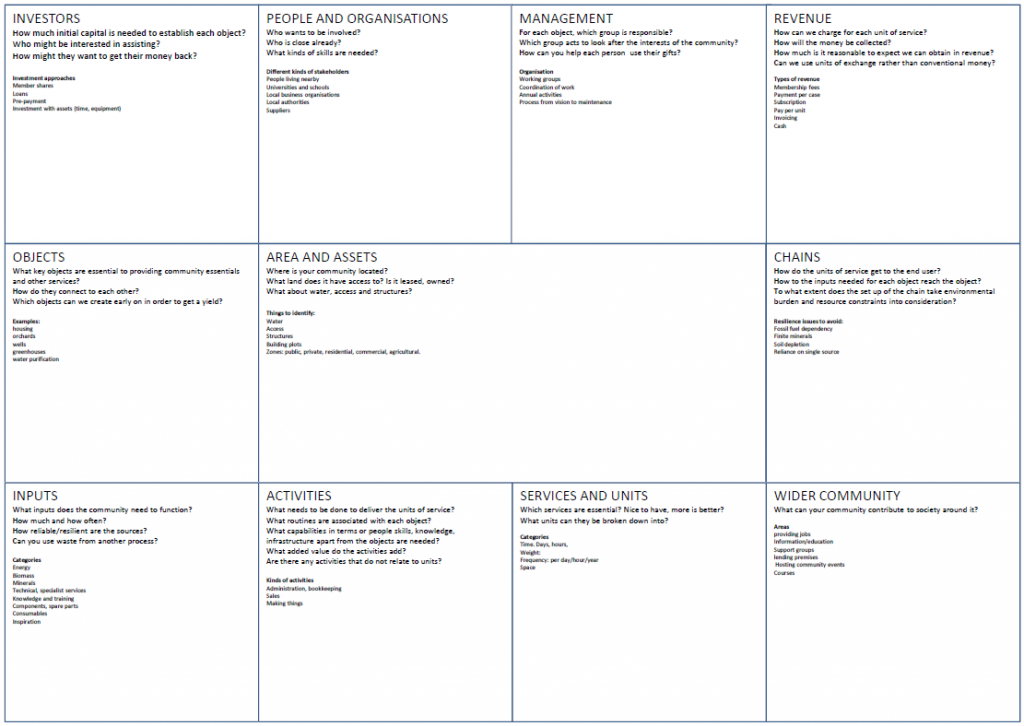
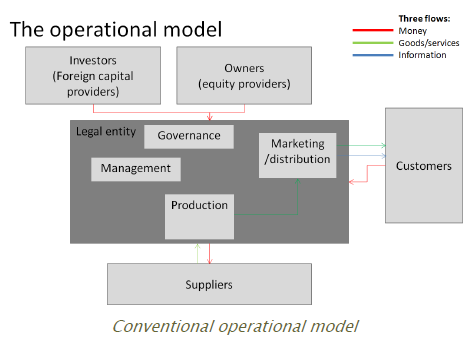
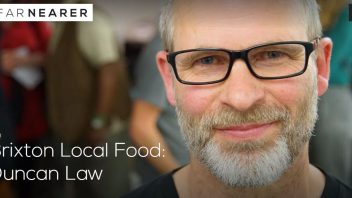
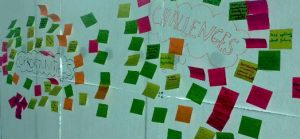

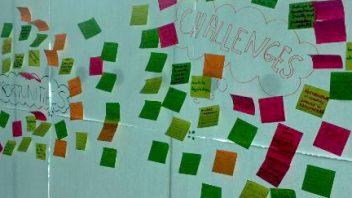
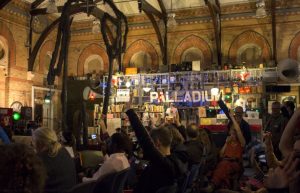




2 Reader Comments
Trackback URL Comments RSS Feed
Sites That Link to this Post